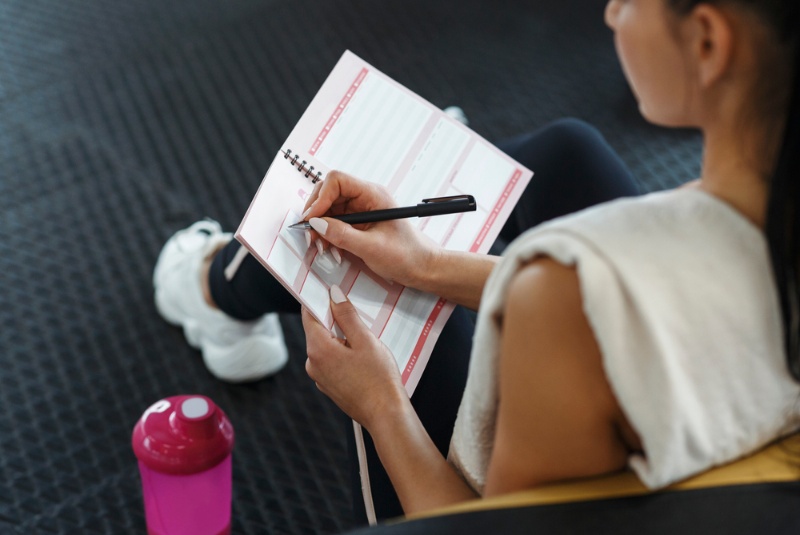Creating a personalized fitness plan is essential to achieving your health and fitness goals. A well-structured plan tailored to your preferences, goals, and lifestyle can significantly increase your chances of success. Whether you’re aiming to lose weight, build muscle, improve endurance, or just maintain a healthy lifestyle, a customized approach is key. This guide will walk you through the steps to create an effective and enjoyable fitness plan, ensuring that you stay motivated and on track.
Assessing Your Fitness Level
Before jumping into any fitness routine, it’s crucial to assess your current fitness level. This assessment can involve tracking your weight, body measurements, strength, flexibility, and cardiovascular health. Simple tests, such as how many push-ups you can do, how long you can hold a plank, or how far you can run, provide a baseline to measure your progress. Understanding where you’re starting from helps in setting realistic goals and crafting a fitness plan that challenges you without being overwhelming.
Setting Clear and Achievable Goals
Goal setting is the foundation of a personalized fitness plan. Your goals should be Specific, Measurable, Achievable, Relevant, and Time-bound (SMART). Whether it’s losing a certain amount of weight within a few months, running a 5K, or simply incorporating more physical activity into your daily routine, having clear, achievable goals keeps you focused and motivated. Remember to celebrate small victories along the way to keep your spirits high.
Choosing the Right Types of Exercise
Your fitness plan should include a variety of exercises to keep things interesting and work different muscle groups. Typically, a balanced routine includes cardiovascular training, strength training, flexibility exercises, and balance training. Depending on your goals and interests, you might prefer running, cycling, yoga, weightlifting, or a mix of several activities. The key is to select exercises that you enjoy and can stick with over time.
Creating a Balanced Routine
A well-rounded fitness routine balances intensity, duration, and frequency of exercises. It’s important to incorporate rest days to allow your body to recover. For most people, a combination of moderate aerobic exercises for 150 minutes a week and strength training exercises for all major muscle groups at least two days a week is recommended. Adjust the intensity and duration based on your fitness level and goals.

Incorporating Flexibility and Recovery
Flexibility exercises, such as stretching or yoga, are essential for a well-rounded fitness plan. They improve range of motion, reduce the risk of injury, and help with muscle recovery. Incorporate flexibility exercises into your routine at least two to three times a week. Additionally, prioritize recovery by getting enough sleep, staying hydrated, and considering activities like foam rolling or massages to aid in muscle recovery.
Nutrition and Hydration
Your fitness journey isn’t just about exercise; nutrition and hydration play a crucial role in your success. A balanced diet that supports your fitness goals, whether it’s muscle gain, fat loss, or maintaining a healthy weight, is essential. Stay hydrated, especially around workouts, and consider consulting a nutritionist to tailor your diet to your specific needs and goals.
Tracking Progress and Making Adjustments
Keeping a record of your workouts, diet, and progress towards your goals is vital. Use a journal, app, or digital tracker to monitor your achievements and areas that need improvement. Regularly review your progress and be prepared to adjust your fitness plan as you evolve. Flexibility in your approach allows you to overcome plateaus, try new activities, and continuously challenge yourself.
Overcoming Challenges and Staying Motivated
Staying motivated can be one of the biggest challenges in sticking to a fitness plan. Set up a support system by involving friends or family, joining a fitness community, or working with a personal trainer. Find ways to make your workouts enjoyable, such as creating a great playlist, trying new sports, or exercising in nature. Remember, setbacks are normal; what matters is getting back on track and keeping your eyes on the long-term goals.
Safety First
Prioritize safety to prevent injuries and ensure that your fitness journey is sustainable. Start each workout with a warm-up and end with a cool-down to prepare your muscles and heart for exercise. Use proper technique, especially when lifting weights or trying new exercises, and listen to your body. If you feel pain or discomfort, take a break or adjust your routine. Consulting with a fitness professional can provide valuable insights into proper form and safety practices.
Embracing Technology and Resources
Leveraging technology can significantly enhance your personalized fitness plan. Fitness apps, online tutorials, virtual classes, and wearable technology offer vast resources for tracking your progress, finding new workouts, and staying motivated. Whether it’s a step counter, a heart rate monitor, or a comprehensive fitness tracking app, these tools can provide valuable feedback on your performance and achievements. Additionally, online communities and social media platforms can offer support, inspiration, and accountability. By embracing the technology and resources available, you can add variety, precision, and a sense of community to your fitness journey, making it more enjoyable and effective.
Creating a personalized fitness plan is a dynamic process that requires reflection, planning, and adaptation. By assessing your current fitness level, setting clear goals, and crafting a routine that balances different types of exercise, you can build a plan that suits your lifestyle and preferences. Remember, the best fitness plan is one that you can stick to consistently, enjoy, and adapt as your needs and goals evolve. With determination and the right approach, your custom fitness journey can lead to lasting health benefits and personal fulfillment.


